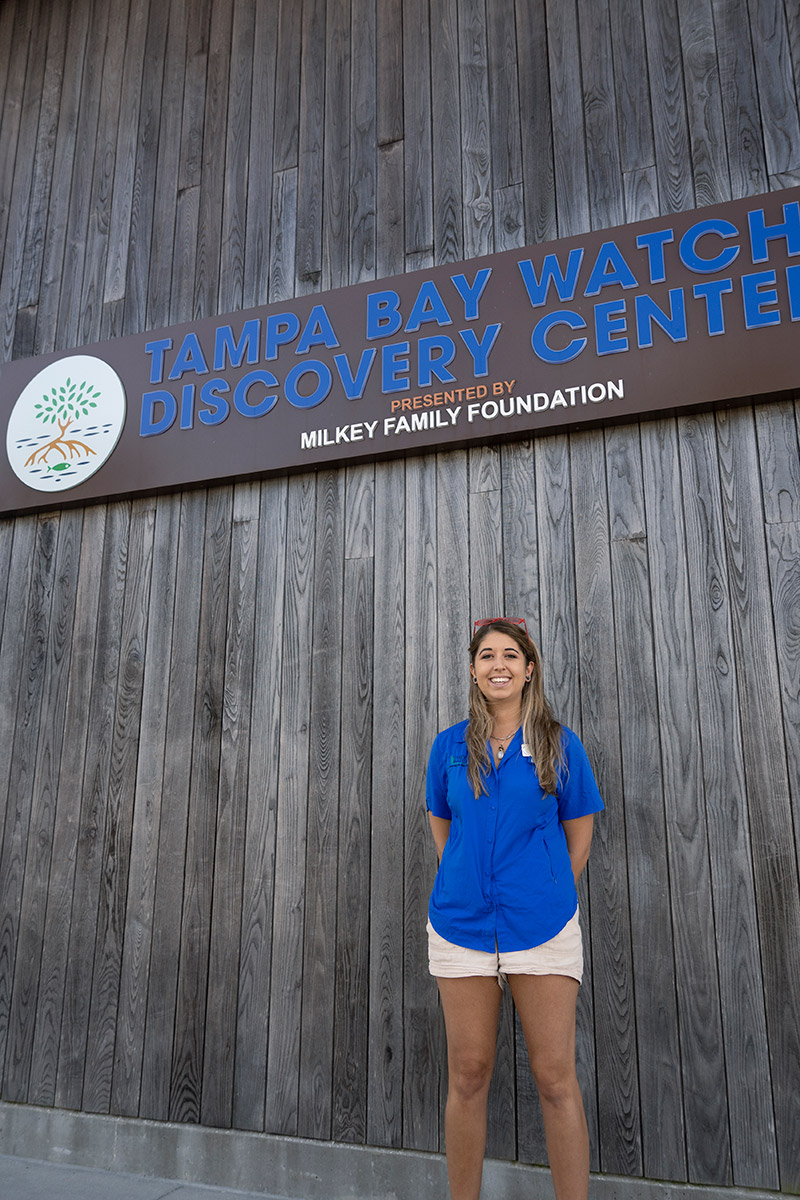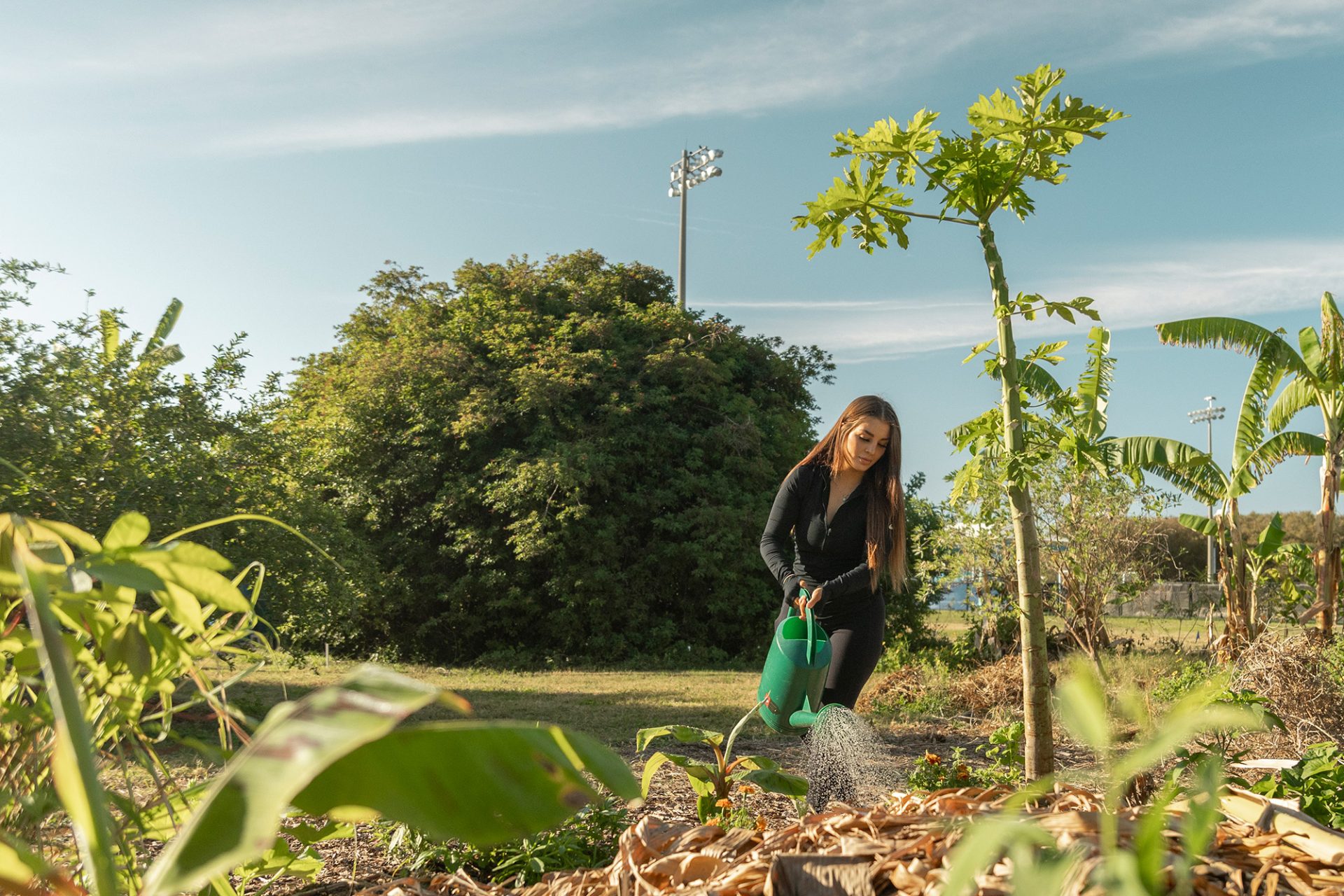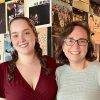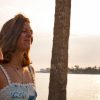Isabel Warren had been working at her internship for less than a week when she noticed something that most people would never consider valuable. Or even approachable.
Cut-up dead squid parts.
It was early September, and Isabel, a senior environmental studies student at Eckerd College, was interning at the Tampa Bay Watch Discovery Center on the St. Pete Pier. The Center boasts interactive exhibits, workshops and hands-on learning programs. One of those educational programs involves the occasional dissection of squid and lionfish, which are invasive species.
“They had squid parts from a dissection,” Isabel explains. “They bagged all the squid up and threw it away. And I thought, What are you doing? I was confused. I wondered why they weren’t giving it away, like to the people who fish on the Pier.
“So I started brainstorming about what I could do with the waste. I was talking with somebody before a class at the Eckerd farm, and Professor Himmelfarb overheard me. He told me to emulsify the fish and bring it to the farm. I said, ‘What are you talking about?’
“And he told me I could use that fish emulsion for fertilizer at the farm. So I went to the Discovery Center and they loved the idea. I got the approval from [Eckerd Farm Manager] Maggie Jensen ’11, and I’ve been bringing the emulsion to the farm ever since.”
Isabel’s efforts not only reduce waste and help create valuable fertilizer, explains David Himmelfarb, Ph.D., environmental studies instructor and internship coordinator at Eckerd, “She’s helping to create educational opportunities and developing a deeper partnership between Eckerd and Tampa Bay Watch. We send a lot of interns to Tampa Bay Watch.
“This is a good example of a student taking inspiration from a class—in this case, my Food and Sustainability class—and applying it to a professional context and developing a sustainable solution.
“It’s not a glamorous job,” adds Himmelfarb, who also is the faculty director of the farm. “But she has the inspiration, creativity and the tenacity to make it work.”
Yet it almost didn’t happen. A transfer student from Santa Monica College who grew up in Kuna, Idaho, Isabel did a Google search for “environmental studies” and found Eckerd College listed among the top three results.
“It’s also a small school,” she adds. “I wanted to have that close-knit community, and I wanted to be able to get on a boat, or be on a farm. Eckerd opened me up to a lot of opportunities.”
Every Eckerd environmental studies major needs an internship to graduate. Himmelfarb suggested Isabel look into an educational internship with Tampa Bay Watch, a 501(c)(3) nonprofit organization dedicated to the protection and restoration of the Tampa Bay estuary through scientific and educational programs.
Established in 1993, according to its website, Tampa Bay Watch performs a variety of habitat restoration and protection activities throughout the year, utilizing thousands of volunteers to help the bay recover from its environmental problems. Individuals of all ages—from community groups, scout troops, schools and other organizations—participate in salt marsh plantings, storm drain markings, oyster bar creation, coastal cleanups, and wildlife protection each year.
“I saw that there would be a lot of public speaking because I would basically be like a teacher,” Isabel says. “That presented a challenge for me. But I needed to get better at that. I needed to say yes. So now I do presentations and teach students in an afterschool program every Friday at the Center.”
The Discovery Center staff perform anywhere from two to six dissections a week for the public. Isabel collects everything that’s been dissected and puts it in 5-gallon buckets with layers of sugar. “The sugar helps to break down the fish faster,” Isabel explains. “Ironically, we live in a very fish-reliant area. But not a lot of people do fish composting. That’s mostly because fish emulsion is really expensive. But I give it away for free.”
The buckets are transported to the Eckerd farm in the backseat of Lola—Isabel’s 2019 Volkswagen SUV. “I drive very carefully,” she says.
Using fish for fertilizer, Isabel adds, is an indigenous practice dating back centuries. Some indigenous communities, including Native American tribes, buried fish or fish parts alongside crops to stimulate plant growth. Fish contain nutrients such as nitrogen, phosphorus and potassium, which are essential for plant development. In modern agriculture, fish emulsion and fish-based fertilizers are used as organic alternatives to synthetic fertilizers due to their nutrient content and environmental benefits.
In a short period of time, Isabel has made a sizable impact out on the Pier, says Zoe Caraffi, education coordinator at the Discovery Center. “She realized the need for this and created all this on her own. I definitely appreciate her initiative and how involved she is with our program.
“We take pride in our unique and sustainable dissection programs, which focus on invasive species, collect valuable scientific data, and reuse research specimens. We hadn’t considered what to do with the waste until Isabel came to us with her idea. We are so excited to add this element to our broader sustainability efforts.
“It’s all interconnected,” Caraffi adds. “I love how this involves two specifically different areas—marine science and a terrestrial garden. We all just want to make a difference in the world.”
Isabel may work on a boat after she graduates. Or do something else. “But I don’t plan on leaving the area,” she says. “I plan on bugging everyone to make sure this project does not fall apart and be forgotten. I feel it’s my legacy.”















